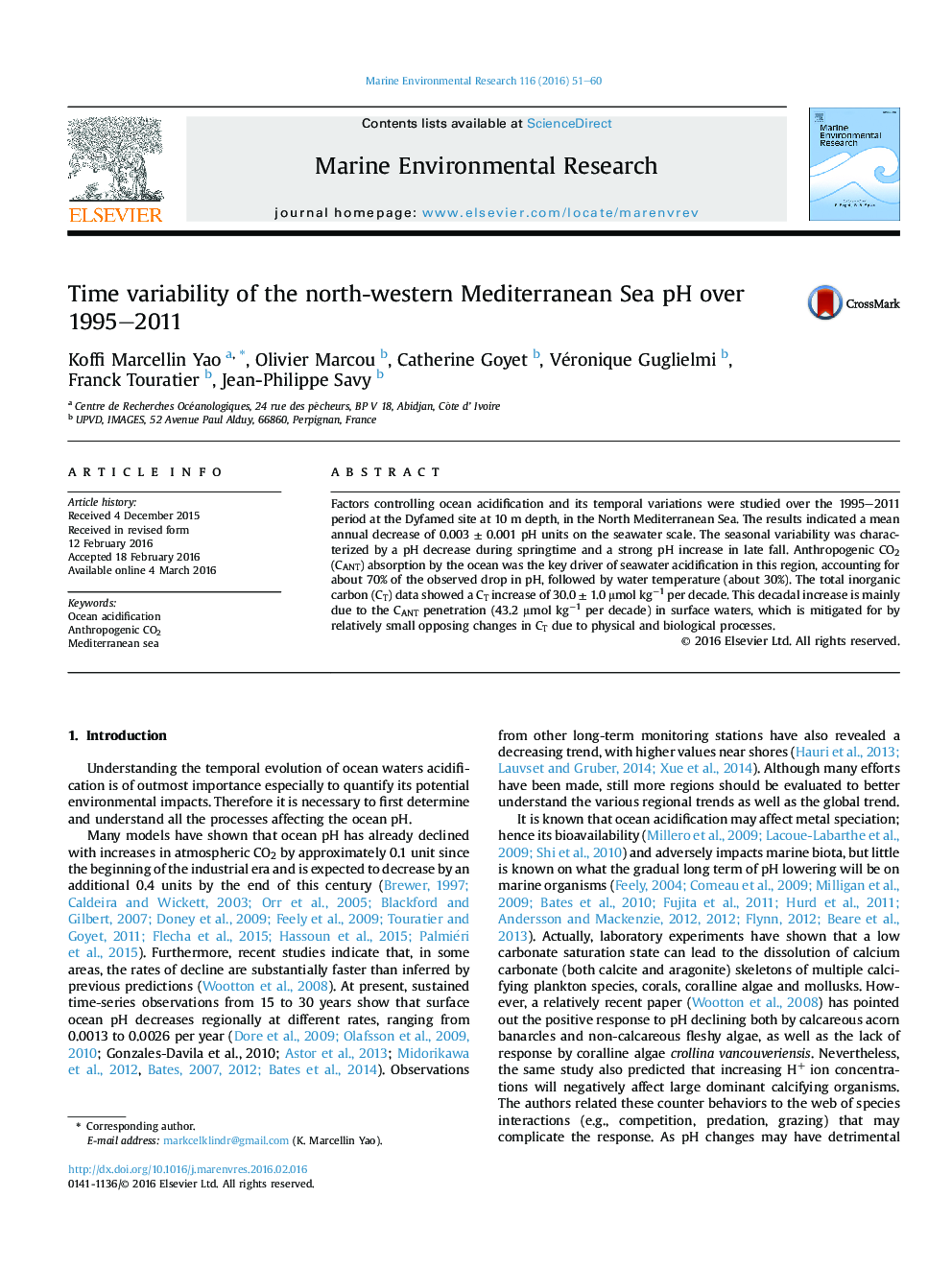| Article ID | Journal | Published Year | Pages | File Type |
|---|---|---|---|---|
| 4550603 | Marine Environmental Research | 2016 | 10 Pages |
•pH decreases at 0.003 ± 0.001 yr−1 at the Dyfamed site (North Mediterranean Sea).•Anthropogenic CO2 (CANT) absorption is the key driver of this acidification.•CT increases at 3.0 ± 0.1 μmol kg−1 yr−1 due to the CANT penetration.•Biological processes have small effects on CT and pH long-term trends in the region.
Factors controlling ocean acidification and its temporal variations were studied over the 1995–2011 period at the Dyfamed site at 10 m depth, in the North Mediterranean Sea. The results indicated a mean annual decrease of 0.003 ± 0.001 pH units on the seawater scale. The seasonal variability was characterized by a pH decrease during springtime and a strong pH increase in late fall. Anthropogenic CO2 (CANT) absorption by the ocean was the key driver of seawater acidification in this region, accounting for about 70% of the observed drop in pH, followed by water temperature (about 30%). The total inorganic carbon (CT) data showed a CT increase of 30.0 ± 1.0 μmol kg−1 per decade. This decadal increase is mainly due to the CANT penetration (43.2 μmol kg−1 per decade) in surface waters, which is mitigated for by relatively small opposing changes in CT due to physical and biological processes.
